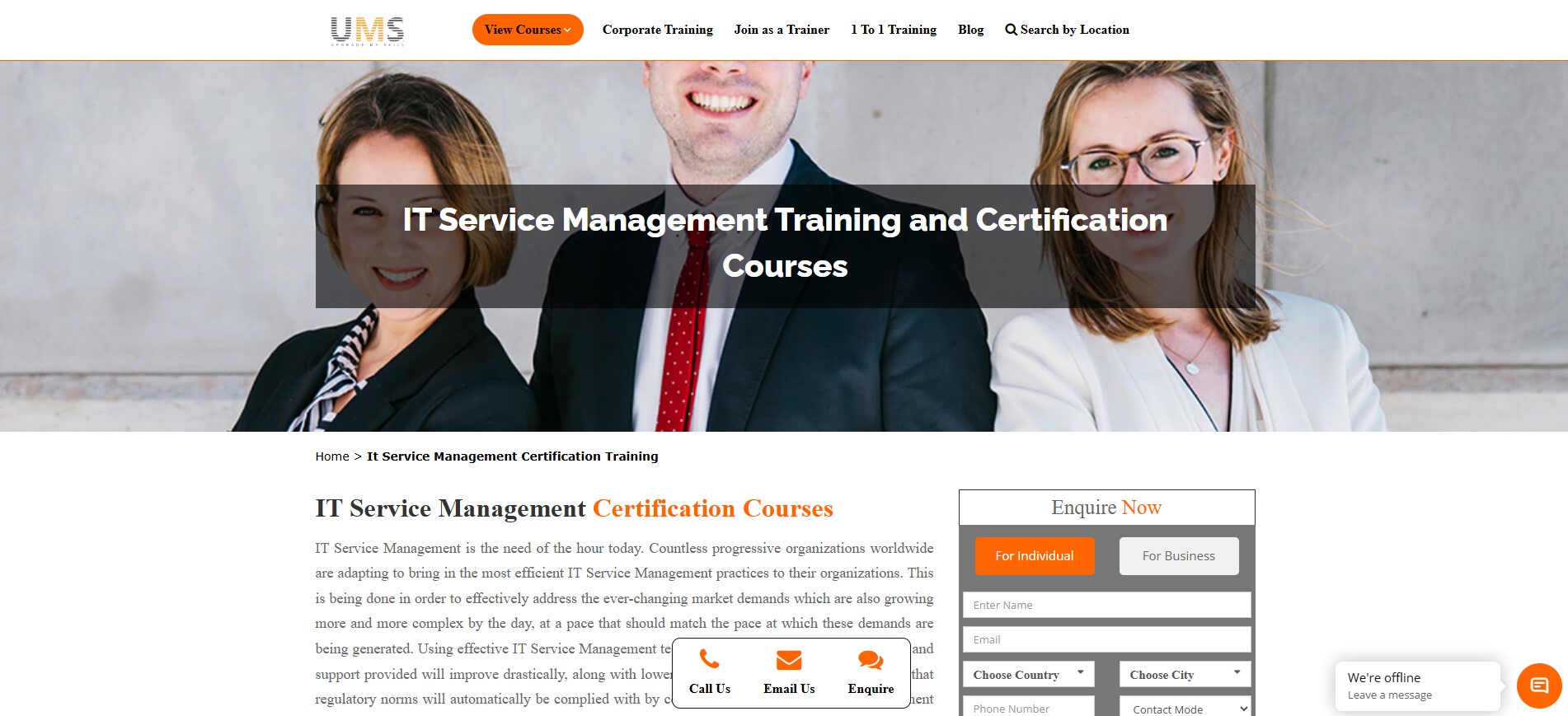Mastering Service Integration: Why SIAM is the Future of Multi-Vendor IT Management

Strong8k brings an ultra-HD IPTV experience to your living room and your pocket.
In today’s dynamic IT landscape, organizations increasingly rely on multiple service providers to meet their growing technological needs. While this multi-sourcing approach offers flexibility and access to specialized expertise, it also introduces significant challenges in managing, integrating, and delivering seamless services. This is where Service Integration and Management (SIAM) emerges as a game-changer.
https://www.upgrademyskill.com/siam-foundation-certification-training
1. What is SIAM and Why Does It Matter?
SIAM, or Service Integration and Management, is a management methodology that enables businesses to manage multiple service providers effectively. It focuses on integrating services from various internal and external suppliers to provide a single business-facing IT organization. Unlike traditional IT Service Management (ITSM), which often handles service delivery in silos, SIAM ensures end-to-end accountability and consistent performance across all vendors.
In a world where hybrid IT environments are the norm, SIAM helps eliminate operational chaos, reduce service disruption, and enhance the user experience.
2. The Rise of Multi-Vendor Environments
As organizations grow and digitize, outsourcing becomes inevitable. Businesses use cloud providers for storage, MSPs for security, SaaS solutions for CRM, and niche vendors for specific industry software. Each of these vendors might excel at their respective services, but without a unified management framework, service overlaps, gaps, and accountability issues arise.
SIAM helps address these issues by:
- Creating clear lines of responsibility
- Improving service quality through defined SLAs
- Encouraging collaboration among service providers
- Increasing visibility and control for the organization
3. Key Principles of the SIAM Framework
- The SIAM model is built on several core principles that guide its implementation:
- Service Integration: Consolidating services from various providers into a single, cohesive delivery model.
- Governance and Control: Defining roles, responsibilities, and performance metrics for all parties involved.
- Process Harmonization: Aligning service delivery processes across vendors to ensure consistency.
- Automation and Tooling: Leveraging technology to streamline operations and reporting.
- Cultural Change: Encouraging collaboration and shared goals among all service providers.
- These principles ensure that even in a multi-supplier environment, services are delivered efficiently, with minimal friction.
4. Benefits of Implementing SIAM
- Organizations that successfully implement SIAM gain several advantages:
- Improved Accountability: There’s no ambiguity about which vendor is responsible for which service.
- Better Service Quality: Through centralized oversight, performance issues can be quickly identified and addressed.
- Increased Efficiency: With integrated workflows and fewer handover delays, IT operations become more streamlined.
- Cost Optimization: Redundant services are eliminated, and vendor contracts can be better managed.
- Business Agility: Organizations can quickly onboard or change vendors without affecting overall service delivery.
5. Challenges in SIAM Implementation
- Despite its benefits, implementing SIAM is not without hurdles:
- Organizational Resistance: Change management is essential to overcome legacy mindsets.
- Tool Compatibility: Integrating tools and technologies from different vendors can be complex.
- Defining Clear Governance Models: A lack of clarity can lead to overlaps in roles and responsibilities.
- Vendor Cooperation: Encouraging competing vendors to collaborate requires effective negotiation and leadership.
- Overcoming these challenges requires a structured approach, guided by best practices and certified professionals.
6. Who Should Learn SIAM and Why?
SIAM is ideal for professionals involved in service management, vendor management, IT governance, and those transitioning to multi-supplier environments. Roles that benefit most include:
- IT Service Managers
- Vendor Managers
- Program Managers
- IT Operations Leads
- CIOs and IT Strategists
Understanding SIAM equips professionals with the tools to manage complex supplier ecosystems, making them indispensable in today’s IT organizations.
7. The Value of SIAM Certification
Formal SIAM training ensures professionals not only understand the framework but can also apply it effectively in real-world scenarios. A SIAM Foundation Certification provides:
- Recognition of your service integration skills
- Enhanced career opportunities in large enterprises and IT service providers
- A deeper understanding of governance, operations, and cultural challenges
- The ability to lead or support SIAM implementation initiatives
Ready to Become a Certified SIAM Professional?
Upgrade your career with the SIAM Foundation Certification Training from UpgradeMySkill. Our expert-led course equips you with essential knowledge and hands-on techniques to master service integration across complex vendor ecosystems. Join today and take your first step toward becoming a multi-vendor service management expert!
Note: IndiBlogHub features both user-submitted and editorial content. We do not verify third-party contributions. Read our Disclaimer and Privacy Policyfor details.






